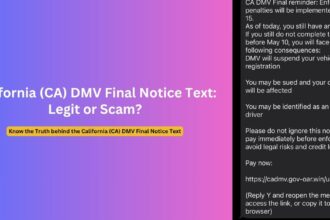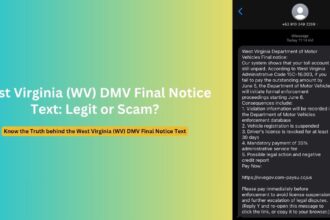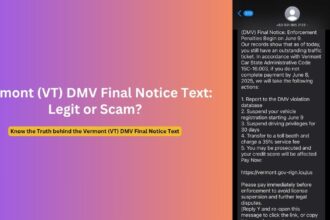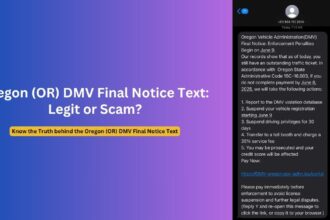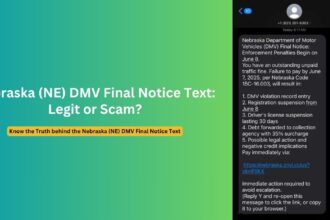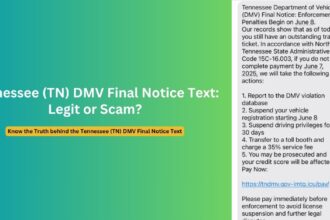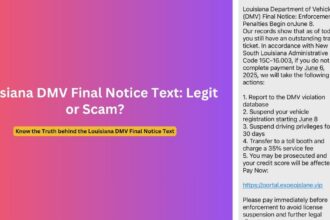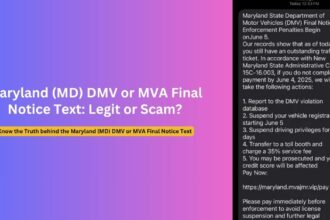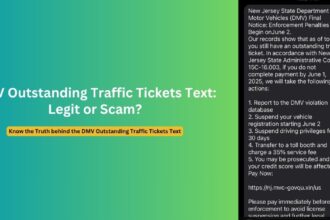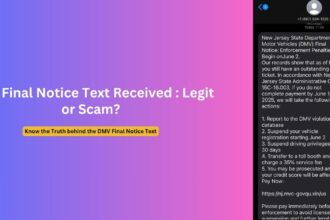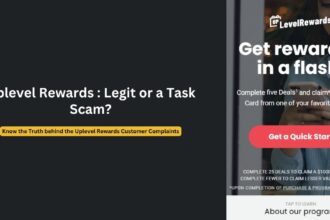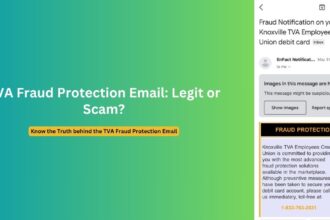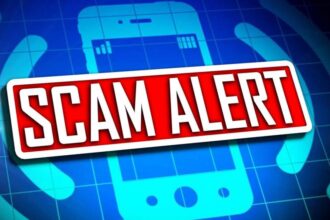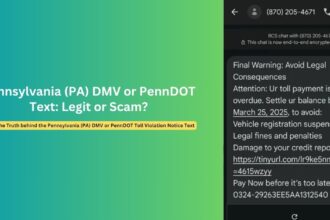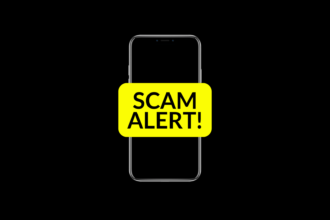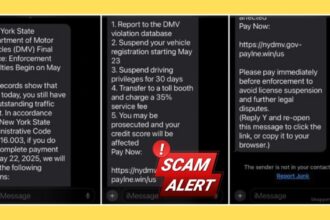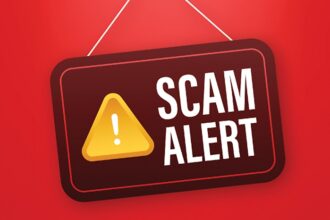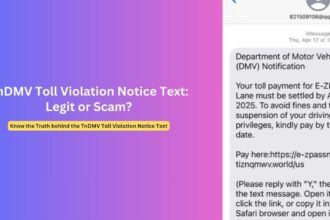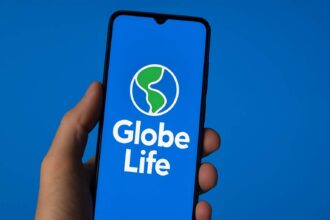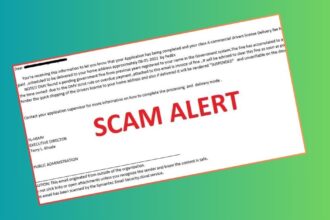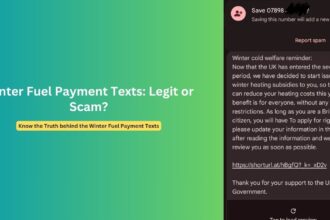In recent months, thousands of Americans have reported receiving text messages claiming to be from Bank of America (BofA) about payments being accepted or declined, often with an urgent request to call a number like 877-812-9077. These messages have created widespread confusion, as they sometimes include accurate personal information and appear alongside legitimate banking activities.
So are these messages real security alerts from Bank of America, or are they sophisticated phishing attempts designed to steal your personal information? This comprehensive guide will help you understand these text messages, identify potential scams, and protect your financial information.
Overview of Bank of America (BofA) Text Message Scams
Bank of America text message scams have become increasingly sophisticated, often mimicking legitimate security alerts that the bank actually sends. The most common variant looks something like this:
BofA Payment Accepted for $153.48 at PetSmart on 04/21. Was this you? IF NO RING 8778129077
These messages typically include several key elements:
- A transaction notification (payment accepted or declined)
- A specific dollar amount and merchant name
- The correct last four digits of your card (in some cases)
- A request to call a phone number if you didn’t authorize the transaction
- A sense of urgency to prompt immediate action
What makes these scams particularly effective is that they don’t always include suspicious links. Instead, they rely on voice phishing (“vishing”) by encouraging recipients to call a seemingly legitimate phone number where scammers are waiting to collect personal information.
How the BofA Payment Accepted Text Scam Works
The scam typically unfolds in the following stages:
1. Initial Contact
Fraudsters send mass text messages to random phone numbers claiming to be from Bank of America. They may use “spoofing” technology to make the text appear to come from a legitimate short code or email address associated with banking services.
2. Creating Urgency
The message creates a sense of urgency by claiming that a transaction has occurred or been declined. This psychological trigger prompts recipients to act quickly without carefully analyzing whether the message is legitimate.
3. Phone Call Engagement
When victims call the provided number (like 877-812-9077), they reach scammers posing as Bank of America representatives. These imposters often have professional-sounding scripts and may even have call center background noise to create authenticity.
4. Information Harvesting
During the call, the scammer will attempt to collect sensitive information such as:
- Complete card numbers
- PIN numbers
- CVV codes
- Online banking credentials
- Social Security numbers
- One-time passcodes sent to your device
5. Account Takeover
Once they have sufficient information, scammers can access your accounts, make unauthorized transfers, change account settings, or sell your information to other criminals on the dark web.
Common Text Message Patterns and Variations
These scams continually evolve, but several patterns have emerged:
Transaction Notification Scams
BofA Payment Accepted for $[amount] at [store] on [date]. Was this you? IF NO RING [phone number]
BofA: We noticed suspicious activity on your debit card and need you to review recent transactions. [link]
Declined Transaction Scams
BofA Security: Debit card ending in XXXX was declined because a PIN wasn’t entered. Please try again with your PIN. Reply STOP to end texts.
BofA Security: Debit card ending in XXXX was declined because the CVV was entered incorrectly. Please try again. Reply STOP to end texts.
BofA Security: Debit card ending in XXXX was declined because it expired. Activate your new card and update the exp date for recurring payments.
Account Security Scams
BofA: As precautionary measure your card has been restricted. Visit [link] to resolve.
BofA Security: We’ve temporarily locked your account due to suspicious login attempts. Call [phone number] to verify your identity.
Red Flags That Indicate a Scam
Despite their increasingly sophisticated nature, these scam messages often contain telltale signs that can help you identify them:
1. Unusual Sender Information
Legitimate Bank of America texts typically come from a 5-6 digit short code number. Messages from email addresses (especially those using consumer domains like @comcast.net or @gmail.com) or regular 10-digit phone numbers should raise immediate suspicion.
2. Awkward or Unusual Phrasing
Phrases like “IF NO RING” instead of “If this wasn’t you, please call” are often indicators of scam messages written by non-native English speakers or automated systems.
3. Urgency and Pressure Tactics
While legitimate bank alerts may convey importance, they typically don’t use excessive urgency or threatening language to pressure you into immediate action.
4. Requests for Sensitive Information via Text
Bank of America has explicitly stated they will never ask customers to send personal information such as account numbers, Social Security numbers, Tax IDs, or one-time passcodes via text, email, or online.
5. Mismatched Information
If you receive a message about a Bank of America account but don’t have one, or if the last four digits don’t match any of your cards, it’s clearly fraudulent.
6. Suspicious Phone Numbers
The number 877-812-9077 is not an official Bank of America customer service number. Always verify phone numbers independently before calling.
How to Identify Legitimate Bank of America Messages
Amid the sea of scams, Bank of America does send legitimate security alerts and notifications to customers. Here’s how to tell the difference:
Legitimate Bank of America Text Characteristics:
- Come from consistent 5-6 digit short codes that you’ve received legitimate messages from before
- Don’t ask you to provide personal information via text reply
- Direct you to log in to your account through the official app or website (not through provided links)
- Can be verified through other channels like the mobile app, online banking, or by calling the number on the back of your card
Using the Bank of America App to Verify:
Many users report that they can verify legitimate transaction attempts by using the “Erica” virtual assistant in the Bank of America app:
- Open the Bank of America mobile app
- Tap the Erica virtual assistant icon
- Type “debit card attempted use”
- Erica will show you recent declined transactions, if any
How to Protect Yourself from Fake BofA Text Messages
Follow these best practices to protect yourself from Bank of America text message scams:
1. Never Call Numbers from Suspicious Texts
Instead of calling a number provided in a text message, always call the official Bank of America customer service number printed on the back of your card.
2. Don’t Reply to Suspicious Messages
Even replying “STOP” to a scam message confirms that your phone number is active, potentially leading to more scam attempts.
3. Verify Through Official Channels
If you receive a concerning text about your Bank of America account:
- Log in to the official Bank of America mobile app
- Check your recent transactions and notifications
- Call the number on the back of your card
- Visit a physical Bank of America branch
4. Report Suspicious Messages
Forward suspicious text messages to:
- Bank of America at [email protected]
- Your mobile carrier at 7726 (SPAM)
- The Federal Trade Commission at ReportFraud.ftc.gov
5. Monitor Your Accounts Regularly
Set up account alerts through the legitimate Bank of America app and regularly review your transaction history to quickly identify unauthorized activity.
6. Consider Additional Security Measures
- Enable two-factor authentication on your Bank of America account
- Set up fingerprint or face ID for mobile banking access
- Consider placing a credit freeze if you suspect your information has been compromised
Frequently Asked Questions
1. Is the “BofA Payment Accepted” text legitimate?
Most “BofA Payment Accepted” texts that ask you to call a number like 877-812-9077 are scams. Legitimate Bank of America alerts typically direct you to log in to your account through the official app or website rather than calling an unfamiliar number.
2. Should I contact 877-812-9077 if I receive a BofA text?
No. The number 877-812-9077 is not an official Bank of America customer service number. Instead, call the number on the back of your Bank of America card or use the official mobile app to check your account status.
3. How can I tell if a Bank of America text is real?
Legitimate Bank of America texts typically come from a 5-6 digit short code, don’t ask for personal information, and can be verified through the official mobile app or by calling the number on your card. When in doubt, never use contact information provided in the suspicious message.
4. What should I do if I already called the scam number?
If you’ve already called a suspicious number and shared personal information, you should:
- Contact Bank of America immediately at the number on the back of your card
- Change your online banking password
- Request a new debit/credit card
- Monitor your accounts closely for unauthorized activity
- Consider placing a fraud alert or credit freeze with the major credit bureaus
5. Can scammers access my account with just my card number?
While having just your card number limits what scammers can do, if they also obtained other details such as your CVV, PIN, expiration date, or online banking credentials, they could potentially make unauthorized transactions or access your accounts.
Conclusion
The rise in sophisticated Bank of America text message scams represents part of a broader trend in “vishing” attacks targeting banking customers. What makes these scams particularly effective is their ability to mimic legitimate bank communications and include accurate personal details, creating confusion even among savvy consumers.
Remember that financial institutions like Bank of America will never ask you to provide sensitive information via text or call a non-official number. When in doubt, always verify through official channels by using the Bank of America mobile app or calling the number printed on the back of your card.
By staying vigilant, recognizing the warning signs, and following proper security protocols, you can protect yourself from these increasingly sophisticated scams. If you believe you’ve been targeted, report it immediately to minimize potential damage and help authorities track these fraudulent activities.

